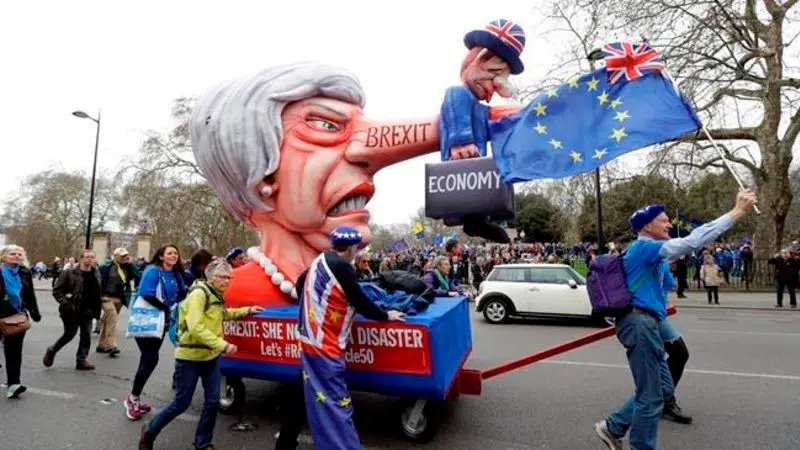
Anti-Brexit marchers flood into London, demand new vote
LONDON — Anti-Brexit protesters flooded into central London by the hundreds of thousands on Saturday, demanding that Britain’s Conservative-led government hold a new referendum on whether Britain should leave the European Union.
The “People’s Vote March” snaked from Park Lane and other locations to converge on the U.K. Parliament, where the fate of Brexit will be decided in the coming weeks.
Marchers carried European Union flags and signs praising the longstanding ties between Britain and continental Europe. The protest drew people from across Britain who are determined to force Prime Minister Theresa May’s government to alter its march toward Brexit.


